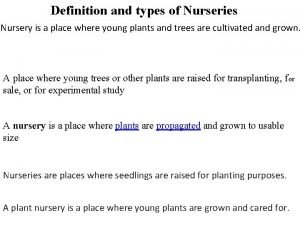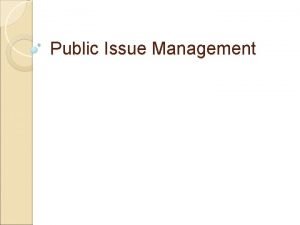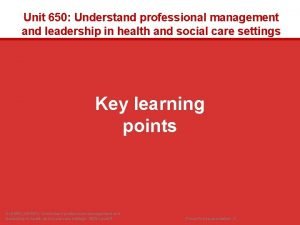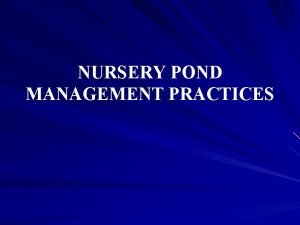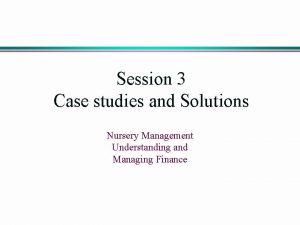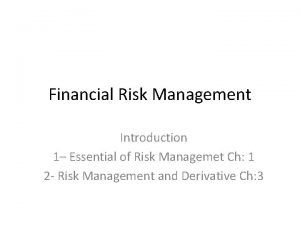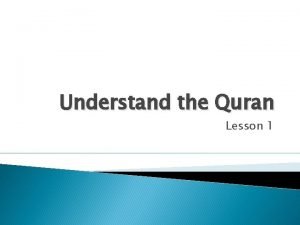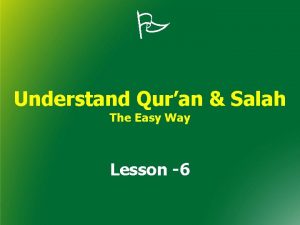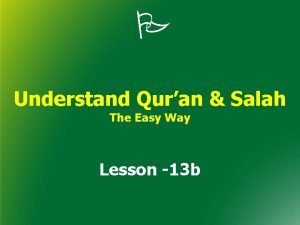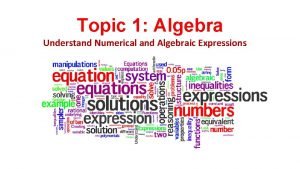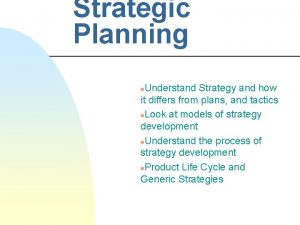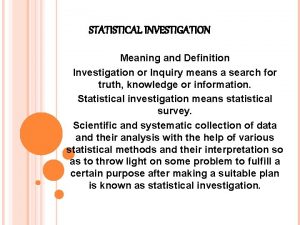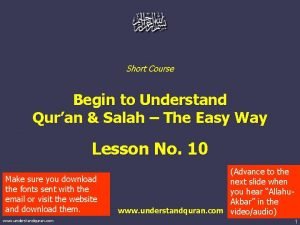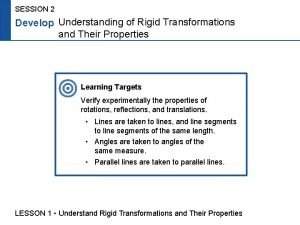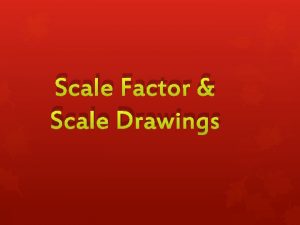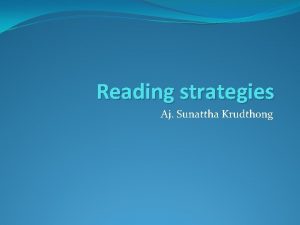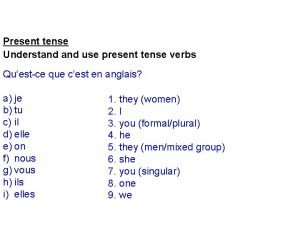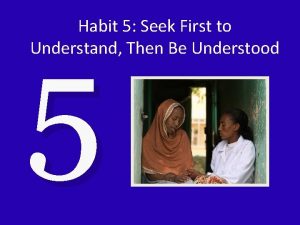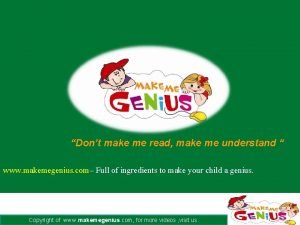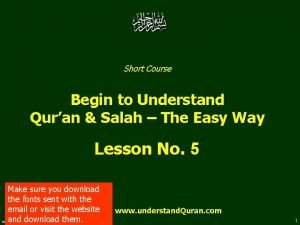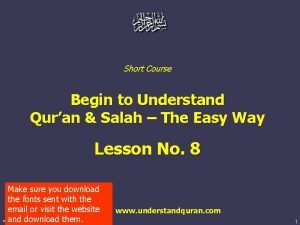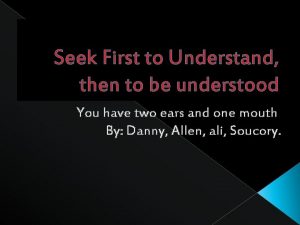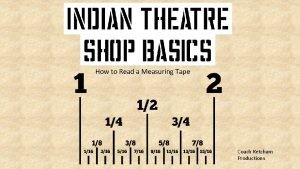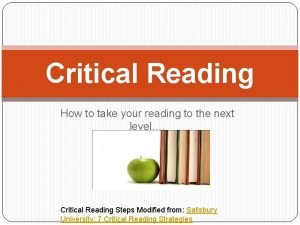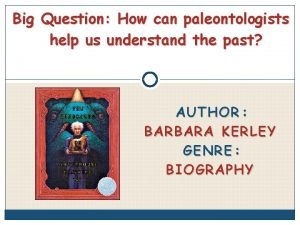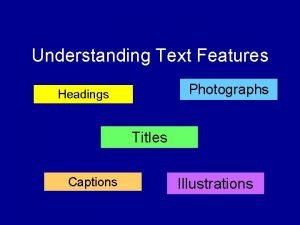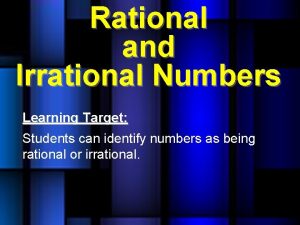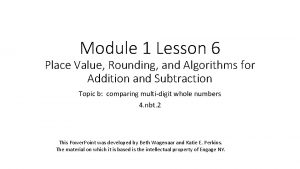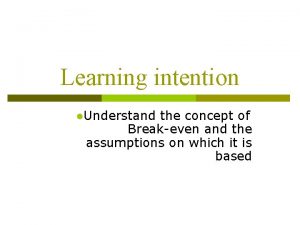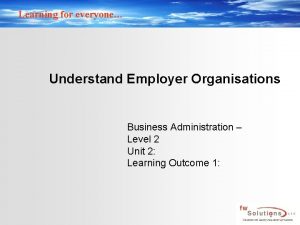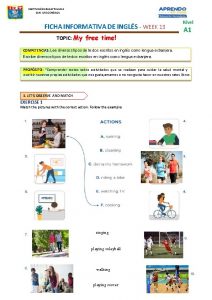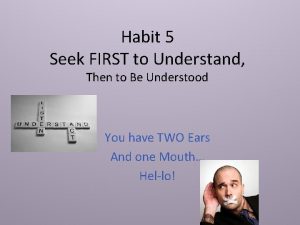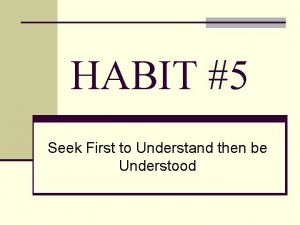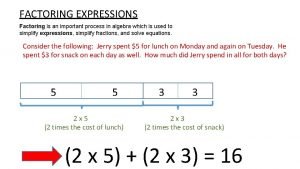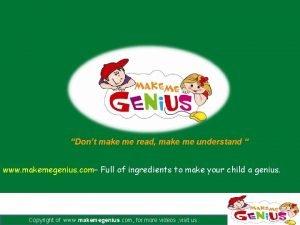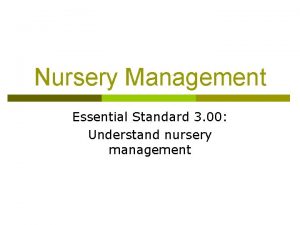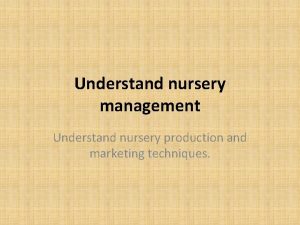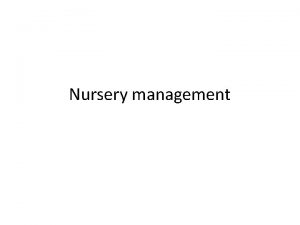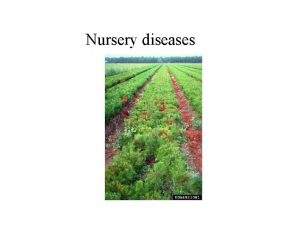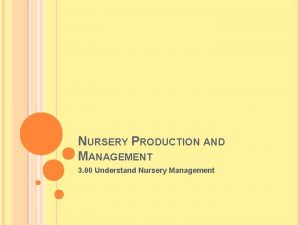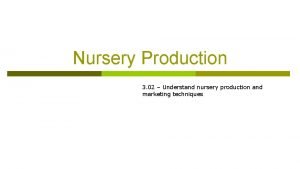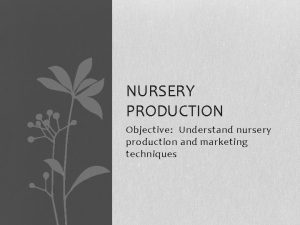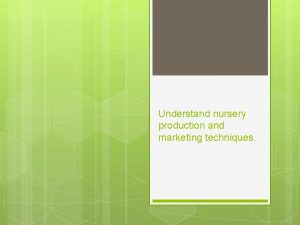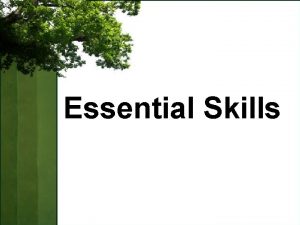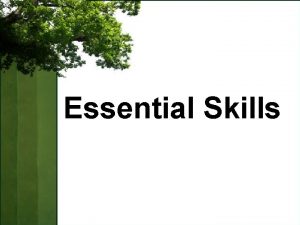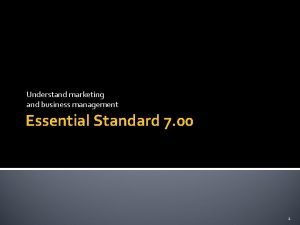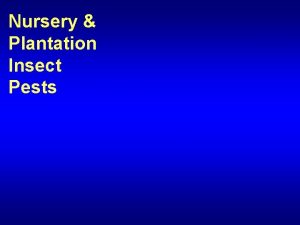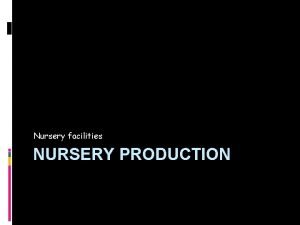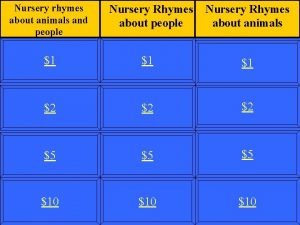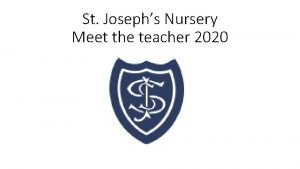Nursery Management Essential Standard 3 00 Understand nursery
























































- Slides: 56

Nursery Management Essential Standard 3. 00: Understand nursery management

Nursery Structures and Growing Environments p Consider climate, soil and topography, available water source, type of plant material, and production method when selecting a nursery structure or growing environment.

Shade Houses – Cold Frames

Shade Houses-Advantages Constructed of wood, PVC or galvanized steel p No artificial head source, heated by solar radiation p Used for hardening off plants and hot weather holding p Protects plants from adverse weather conditions p

Shade Houses-Advantages Cover with plastic during the winter to reduce overwintering injury to woody ornamentals as well as reduce temperature fluctuations during the overwintering period p A variety of plant material can be grown p Good air circulation p Good filtered light; shade cloth p Inexpensive growing structure p

Shade Houses-Disadvantages Some plants cannot be grown year round p No heat source other than sun p No heat or cooling p

Hotbeds

Hotbeds-Advantages Constructed of wood or galvanized steel, glass and/or plastic p Solar heated, electric cables, steam or heated by natural materials such as hay or manure p Used for starting plants earlier than in a cold frame p Inexpensive p

Hotbeds- Disadvantages Can be expensive to heat p Hay or manure needs to be replaced when the temperature in the hotbed drops below 50 degrees p

Container

Container-Advantages Plants are easy to move and transport p Grown to sellable size in the container p Less shock to plants p Retailers can keep plants longer before selling p Uniform soilless media p Insects, diseases, fertility and p. H are easier to control p Monitoring of water intake easily controlled p

Containers-Disadvantages Requires more water p More labor intensive p May become pot bound p May require winter protection p May have a higher start-up cost (pots, media) p Plants may have to be moved to larger containers p May be expensive to ship p Others: blow over p

Pot-In-Pot (PNP)

Pot-in-Pot Uses a slightly larger pot (socket pots) that are buried in rows in the ground and the potted plants (production pots) are placed inside p Mix between Container production and Field production p Video p

PNP- Advantages No staking p No blown over containers p Cooler roots in the summer p Well insulated roots in the winter p Easy to move and transport p Becoming a more viable option to the traditional field grown p Combines the benefits of field production with the marketing flexibility of container production p

PNP- Disadvantages p Startup cost is expensive n p Field prep and purchasing 2 containers for each plant opposed to 1. 15 -25 gallon pots are commonly used Labor costs

Field Grown (Traditional)

Field Grown-Advantages Plants are grown directly in native soil p Bare root plants are easy to handle and plant p

Field Grown-Disadvantages Requires equipment to be harvested p Plants may go into shock when moved or transplanted p Harder to control insects, diseases, fertility and p. H p Soil must be well drained p Limited time to harvest p Supply cost: liners, supplies, burlap, wire baskets, twine, and pinning nails p Expensive to ship p

Maintenance of Structures

Shade houses (cold frames) Need painting or replacing over time p Plastic covering will need to be replaced on a regular basis p Replacement of gravel and weed block p Debris removal p

Hotbeds Change out heat source (straw, hay, manure) p Pest control p Cover replacement p Debris removal p

Container Pest control p Replace weed block p Replace gravel on roads and under containers p

PNP Replacement of damaged pots p Pest control p Replace gravel on roads p

Field Grown Erosion control p Pest control p Replace Gravel on roads p

Maintenance of Plants

Maintenance of Plants Fertilizer-needs to be replaced regularly in order for the plants to continue to grown and remain strong p Irrigation-sprinkler or drip is determined by crop requirement and container arrangement p Shading-on newly established plants or plants that will grow in shady areas p

Pruning Shape plant materials p Make plants more compact p Train growth to form into a mature plant (central leader or many stems) p Removed dead or diseased parts p Espalier-a plant that is trained to grow flat against a wall, railing or trellis p

Pest Control Methods/Program p p IPM- process used to solve pest problems while minimizing risks to people and the environment Chemical control-uses chemicals to eliminate plant pests Biological control-uses living organisms such as predators, parasites and pathogens to control the populations of pests Mechanical-manages pests by physical means such as barriers, screens, row covers, trapping, weeding or removal of the pest by hand

Pest Problems p Insects n n n p ID insect-aphids, spider mites, whitefly, scale, etc. Determine type of control-chemical, biological or mechanical Treat based on method recommendations Weeds n n n ID weeds-henbit, chickweed, grasses, etc. Dig or pull weeds Treat based on method recommendations

Pest Problems p Disease n n p Rodents n n p ID disease-blights, fungi, rusts, etc. Treat based on method recommendations ID the rodent- voles, mice squirrels, etc Trap or treat based on method recommendations Mollusks n n ID mollusks-snails, slugs, etc. Treat based on method recommendations

Winter Protection

Winter Protection p Frost Blanket n n Traps and collects heat during the day and releases it at night to keep your plants warm and growing. In the spring it gives you a jump-start on plants and wards off pests. In fall, use it to extend your growing season. Float or drape the lightweight fabric over your plants.

Winter Protection p Water (bud protection) n n Spray water on buds before a freeze Often used on fruit trees and strawberries

Winter Protection p White plastic n n Reduce overwintering injury to woody ornamentals Protects young plants in early spring

Nursery Production

Types of Plants for each Trees-containers, PNP, B&B (balled and burlapped), bareroot p Shrubs- container, PNP, B&B p Perennials-container, PNP p

Propagation p Sexual (seed) n n p Stratification-chilling seeds to stimulate winter conditions before germination (Ex: Baptisia and daylily) Scarification- breaking of the seed coat (Ex: redbud and maples) Asexual n Cuttings

Propagation p Asexual n Cuttings Softwood (herbaceous) cutting-leaf, pieces of the stem or roots from non-woody plants. Cuttings are taken late spring through early summer p Hardwood cutting- pieces of stem from woody plants. Cuttings are taken fall through winter p n Grafting-joining separate plant parts together to form a union and grow Scion-top portion of the graft p Rootstock-root or bottom portion of the graft p

Propagation p Asexual n n Budding-a form of grafting when a bud is used instead of scion Layering- forcing roots to grow on the stem of the plant while it is still attached to the parent plant

Soil for Containers Media must be porous p Soilless media p n Peat Partially decomposed material mined from swamps p Good moisture holding capacity p n Perlite Natural volcanic material that helps aerate the soil p Good moisture holding capacity p n Vermiculite Mica mineral matter used to start cuttings p Neutral p. H p Good moisture holding capacity p

Soil for Containers (cont. ) p Soilless media n Bark Ground pine or oak bark p Increases the porosity of a soil p n Amendments Lime-calcium and magnesium increased the p. H level of soil making it alkaline or “sweet” correcting the acidity of the soil p Fertilizer- adds macro and micro nutrients to soil p Wetting agents- increases water retention of soil p

Soil for planting in the ground Use native soil in traditional field planting p Tree and shrub roots need to grow in native soil p A soil test should be used to determine if soil amendments are needed p Soil amendment functions p n n p Increase water and nutrient holding capacity Improve aeration and water infiltration Soil amendment should be mixed with natural soil

Soil for planting in the ground p Organic-”fresh” organic material should be first composted n Sphagnum peat Dehydrated remains of acid bog plants p Holds moisture and are high in acidity p n n Grass clippings- add nutrients to the soil Saw dust- high carbon to nitrogen ratio; can make nitrogen unavailable to plants Compost- decayed organic matter, good fertilizer and soil conditioner Manure- adds nutrients to the soil, good moisture holding capacity

Soil for planting in the ground p Inorganic n n n Vermiculite- good moisture holding capacity. Perlite- good for aerating the soil. Pea gravel- good for heavy clay soil.

Planting p Containers n n n p Place one plant in the center of container Evenly space plants in container if more than 1 plant is used Planting depth is important and varies depending on plant material Field n n Determine the layout and spacing of trees and shrubs in the field Determine the equipment needs of field grown plants

Water p Container and PNP n n n Watering is more important for container grown plants than field grown plants because roots can go no deeper or spread any wider than the container It is best to water container plants in the morning for maximum absorption, however, some may need to be watered more than once a day depending on the weather Should be watered until water runs through holes in bottom of pot

Water p Container and PNP n n A gallon container needs about a pint of water at each watering Require more water in dry, hot, windy, weather Need more water when actively growing and flowering Do not allow any container plants to dry out!

Water p Field Grown n n Should be watered in the morning for maximum absorption A more porous soil needs more water than a clayey soil Watering for field production depends on the weather Require more water in dry, hot, windy weather Need more water when actively growing and flowering

Fertilizing schedule should be established for each type of plant grown p Scheduled periodic liquid fertilizing should be established depending on plants, soil, size, etc p Slow release fertilizers such as Osmocote and Magamp are mixed into potting media or top dressed on the soil surface p

Fertilizer Plants in containers for more than 1 year require additional fertilizer and should be watered thoroughly after fertilizing (varies on pot size and plant material) p Plants should be observed and fertilization changed as plant foliage shows a need for either more or less fertilizer. Tissue analysis can be done to determine deficiencies. p

Marketing

Develop a Marketing Plan Complete a marketing analysis (research used to predict the future of a market) to determine your target market p Once a marketing analysis is complete, determine what to sell p Know your competition p

Price your product Use this formula to determine your price Materials + overhead + labor = selling price p p Pricing may vary depending on availability of plant material in your area

Promotion Advertising p Public Relations p Personal Contacts p Communications p Join local and state associations p n p NC Nursery and Landscape Association Attend trade shows

Placement Providing a place that is convenient to the customer p Shipping, delivery, internet ordering or nursery pick up p
 To understand recursion you must understand recursion
To understand recursion you must understand recursion Plant nurseries meaning
Plant nurseries meaning Characteristics of lipids
Characteristics of lipids Explain public issue management
Explain public issue management Unit 650 understand professional management
Unit 650 understand professional management Post stocking management of fish pond
Post stocking management of fish pond Nursery management solution
Nursery management solution Estimated standard error of mean
Estimated standard error of mean Definition of home language
Definition of home language Meaning of
Meaning of Bahagian pembangunan kurikulum pendidikan khas
Bahagian pembangunan kurikulum pendidikan khas Introduction to financial risk
Introduction to financial risk Top management middle management first line management
Top management middle management first line management Top management middle management first line management
Top management middle management first line management Top management and middle management
Top management and middle management It helps us understand people and societies
It helps us understand people and societies Surat tasmiyah
Surat tasmiyah Understand quran
Understand quran Understand quran and salah the easy way
Understand quran and salah the easy way Understand algebraic expressions
Understand algebraic expressions Understand your role
Understand your role Generic strategies examples
Generic strategies examples What do you mean by statistical enquiry
What do you mean by statistical enquiry Understand quran and salah the easy way
Understand quran and salah the easy way Understand rigid transformations
Understand rigid transformations Scale drawings/models & scale factor
Scale drawings/models & scale factor Opera refers to a dramatic art form originating in europe
Opera refers to a dramatic art form originating in europe Qualitative and quantitative research
Qualitative and quantitative research Je, tu, il/elle nous, vous, ils/elles endings
Je, tu, il/elle nous, vous, ils/elles endings People media meaning
People media meaning Habit number 5
Habit number 5 Make me understand
Make me understand What order is used when placing events on a timeline?
What order is used when placing events on a timeline? Learn quran and salah the easy way
Learn quran and salah the easy way Understand quran and salah
Understand quran and salah Understandquran.com
Understandquran.com Www.understand quran and salah
Www.understand quran and salah We must first seek to understand
We must first seek to understand How to understand and apply the old testament
How to understand and apply the old testament Coach measuring tape
Coach measuring tape Critical reader definition
Critical reader definition How can paleontologists help us understand the past
How can paleontologists help us understand the past What is a comparative adjective
What is a comparative adjective Text features captions
Text features captions Kud verbs
Kud verbs Quran and salah the easy way
Quran and salah the easy way Can a real number be both rational and irrational
Can a real number be both rational and irrational Lesson 6 understand decimal place value
Lesson 6 understand decimal place value L understand that
L understand that Understand employer organisations
Understand employer organisations 6151 san luis gonzaga
6151 san luis gonzaga Self-centered listening
Self-centered listening The deepest need of the human heart is to be understood
The deepest need of the human heart is to be understood Can we understand god
Can we understand god Understand algebraic expressions iready
Understand algebraic expressions iready Factoring is an important
Factoring is an important Make me understand
Make me understand

